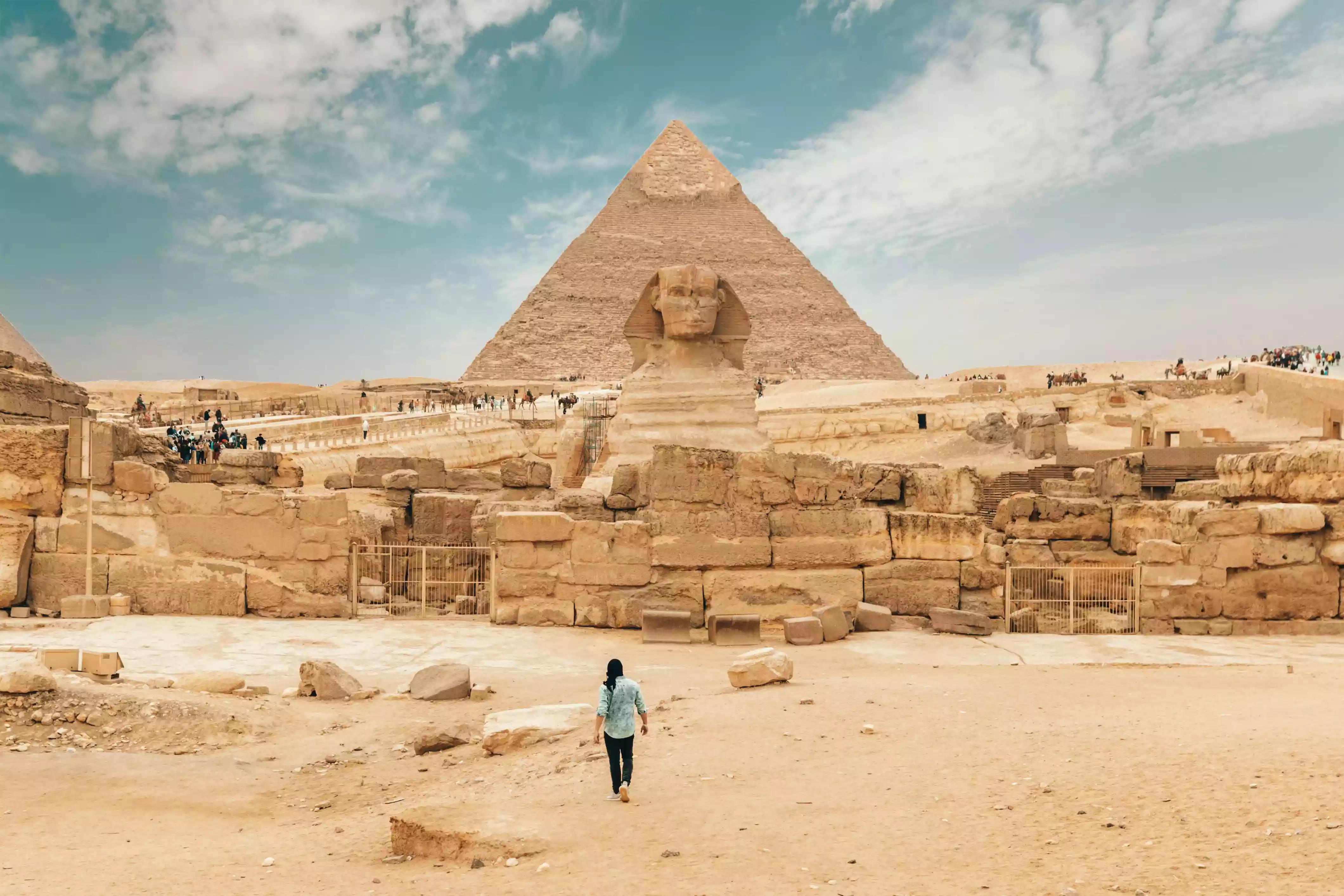Pyramid of Khafre

he Pyramids of Giza are undoubtedly some of the most recognizable and awe-inspiring structures in the world. Among these ancient wonders, the Pyramid of Khafre stands out as one of the most impressive and well-preserved.
Built over 4,500 years ago during the Old Kingdom period of ancient Egypt, the Pyramid of Khafre was constructed as a tomb for the pharaoh Khafre. It is the second-tallest and second-largest of the three pyramids at Giza, standing at a height of 143 meters (471 feet) and covering an area of approximately 10.5 hectares (26 acres).
One of the most remarkable features of the Pyramid of Khafre is its perfect symmetry. The pyramid was constructed using large, precisely cut blocks of limestone, which were quarried from the nearby plateau. The blocks were then transported to the construction site using a system of ramps and levers. The pyramid's base is perfectly square, with each side measuring 215 meters (705 feet) in length. The pyramid's four faces are also perfectly aligned with the four cardinal directions.
The entrance to the pyramid is located on the north side and leads to a long, narrow passageway that descends deep into the heart of the structure. Along the way, visitors can see the intricate system of chambers and corridors that make up the interior of the pyramid. The burial chamber itself is located deep within the pyramid and contains a large, empty sarcophagus made of granite.
Surrounding the Pyramid of Khafre is a series of smaller structures, including temples, causeways, and satellite pyramids. These structures were used for various purposes, such as housing the pharaoh's priests, providing offerings to the gods, and serving as smaller tombs for members of the royal family.
Despite being over 4,500 years old, the Pyramid of Khafre has remained remarkably well-preserved thanks to its sturdy construction and the arid climate of the surrounding desert. However, like many ancient structures, it has not been immune to damage over the centuries. Looters and treasure hunters have long targeted the pyramids of Giza, and many of the smaller structures surrounding the Pyramid of Khafre have been damaged or destroyed over time.
Today, the Pyramid of Khafre remains a symbol of the incredible engineering and architectural achievements of ancient Egypt. It continues to attract visitors from around the world who come to marvel at its size, symmetry, and beauty. For anyone interested in history, architecture, or engineering, a visit to the Pyramid of Khafre is a must-see experience that is sure to leave a lasting impression.

